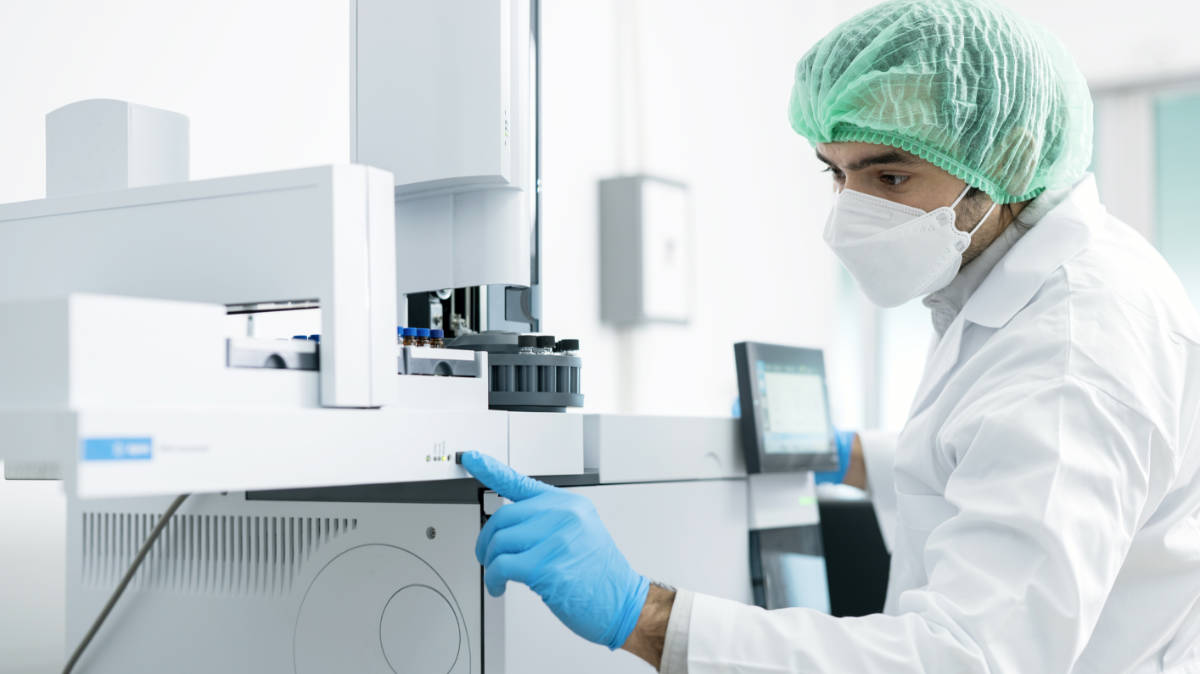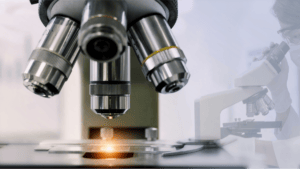How Trajan is powering the future of global scientific labs with its capital equipment

Trajan is helping forge the future of laboratory innovation with its capital equipment. Pic via Getty
- Trajan’s capital equipment segment is a leader in laboratory automation and analytical innovation
- Segment includes specialised robotic workflows and advanced analytical instruments to tackle complex scientific and laboratory challenges
- Trajan’s capital equipment used by leading laboratories worldwide across pharmaceutical, clinical, environmental, and food sectors
Special Report: Melbourne-headquartered Trajan’s capital equipment segment is at the forefront of laboratory automation and analytical innovation, helping scientists and clinicians make faster, more accurate decisions that advance health, safety and discovery worldwide.
The capital equipment segment of Trajan Group Holdings (ASX:TRJ) encompasses specialised robotic workflow systems, advanced online and laboratory instruments designed to address highly complex analytical challenges.
Trajan is working to modernise laboratory operations and boost productivity, automating complex processes like sample preparation, measurement and data capture, with its capital equipment segment enabling higher throughput and fewer manual errors.
Its capital equipment is used by leading laboratories globally across various sectors worldwide, supporting both routine testing and advanced research including:
- Pharmaceutical – advanced sample preparation systems for complex drug metabolite analysis and biomarker discovery
- Clinical – specialised workflow solutions for challenging bioanalytical assays requiring ultra-high precision
- Food – sophisticated detection systems for trace contaminant analysis in complex food matrices
- Environmental – advanced monitoring instruments for difficult-to-detect pollutants in challenging environmental samples
Trajan’s advantage isn’t the throughput or scale that its workflow solutions address, but rather their ability to enable precise, repeatable measurements that outperform manual methods.
Whether the application is clinical, pharmaceutical, environmental, or food safety-related, all are designed to deliver measurements that enrich personal health.
Growth of capital equipment segment
Trajan has three segments to its business including components and consumables, capital equipment and disruptive technologies supporting new innovation and product development.
Capital equipment accounts for about a third of Trajan’s global revenue, forecast to be between $160 to $165 million in FY25, with CEO and managing director Stephen Tomisich noting the segment had gone through the $50m mark.
Trajan took its first step in the capital equipment segment in 2016 through the acquisition of Leap Technologies in the US.
“The reason we did that was that as Trajan was planning to bring new technologies to market, like blood microsampling, we realised that we’d need to have some type of automation capability to enable adoption of those techniques into the laboratory,” Tomisich said.
Over time, Trajan developed its automation capability and then acquired the Axel Semrau business in late 2021 and combined that business with its initial acquisition to create a global team.
“That global team has a core competency in looking at scientific problems across four verticals – clinical, pharmaceutical, food, and environmental,” he said.
“Our equipment solutions are based on a proprietary software capability referred to as CHRONOS, which is a smart sequencing tool that allows us to really optimise the workflow for solving many scientific problems in the laboratory.”
Tomisich said while growth in its capital equipment had often been attributed to M&A, this was not the case.
“One of the things that is really rewarding about this segment is that most of the growth has been organic,” he said.
“If you look at the revenues we acquired and the revenue level we’re at now, it’s more than double through organic growth that has been achieved.”
Listening to voice of customers
Trajan is increasingly embedding customer feedback into its product development, especially through close collaboration with key end users.
This approach is helping shape not just individual solutions but influencing innovation across the wider business.
“There’s a nice voice-of-customer interface that comes about as we work with some of the key end users in developing our solutions, and that voice of customer is increasingly finding its way into the rest of the business,” Tomisich said.
Vice president of marketing for workflow solutions Cathy Cordova said when it comes to gathering the voice of the customer, Trajan takes a multi-faceted approach.
“One key source is our installed base – customers we actively engage with through ongoing service and support,” she said.
“We position ourselves as a true partner in their automation journey, which allows us to maintain a strong feedback loop and stay closely aligned with their evolving needs.
Cordova said close customer collaboration often reveals hidden workflow issues and sparks new ideas, with Trajan regularly asked whether tasks can be automated or if its systems can support more demanding applications, shaping future innovation.
The company also engages deeply with scientific communities, including those focused on hydrogen-deuterium exchange (HDX) – a cutting-edge technique in protein science used to characterise drug-binding sites and support the development of new drug targets.
“These touchpoints often spark valuable insights or new ideas that help shape our innovation pipeline and keep us closely connected to customer needs,” Cordova said.
Solving complex challenges like detecting mineral oils in food chain
Tomisich said there were various examples of its capital equipment solving customers challenges including work in MOSH/MOAH, which is detecting presence of both aromatic and saturated hydrocarbons – mineral oil products that are seeping their way into the food chain.
“Before our automation of those workflows came along, to do this type of analysis required a lot of at-bench manual sample preparation work,” he said.
“That leads to two challenges – one is that it really limits the sample load that you can work with, but it also relies on a lot of human interaction and is therefore prone to all sorts of errors.
Following more than 10 years of development, combining scientific know-how with its underlying automation capability, Trajan has become a world leader in working with samples for detection of those MOSH/MOAH contaminants.
Tomisich said another example was a pharmaceutical company using one of its capital equipment systems for powder dosing and powder handling to improve volume of combinations that they could work through unattended.
“This is a platform where robotics is taking combinations of powders, mixing them, transferring them to a liquid handling platform, and injecting them into a mass spectrometer as part of the candidate discovery process that happens in big pharma companies,” he said.
“If you can imagine, once before, you’d have a scientist working at a lab bench weighing powders, mixing, developing the solution form, injecting into an instrument for measurement, in a very sequential way.
“Whereas now you’re able to have a rack loaded and let it run overnight, and the system itself is automatically understanding how to handle those powders, how to weigh them, how to transport them into a vial, take them up into a solution and inject them into a mass spectrometer.”
This article was developed in collaboration with Trajan Group Holdings, a Stockhead advertiser at the time of publishing.
This article does not constitute financial product advice. You should consider obtaining independent advice before making any financial decisions.
Related Topics

UNLOCK INSIGHTS
Discover the untold stories of emerging ASX stocks.
Daily news and expert analysis, it's free to subscribe.
By proceeding, you confirm you understand that we handle personal information in accordance with our Privacy Policy.








